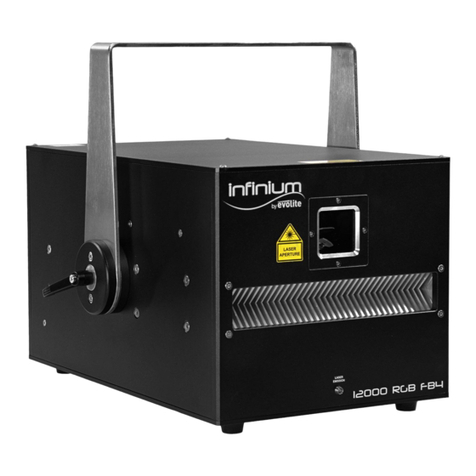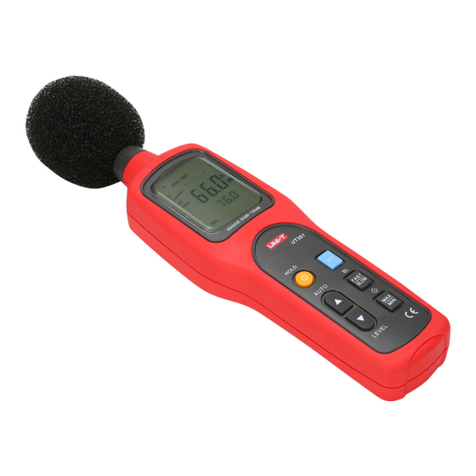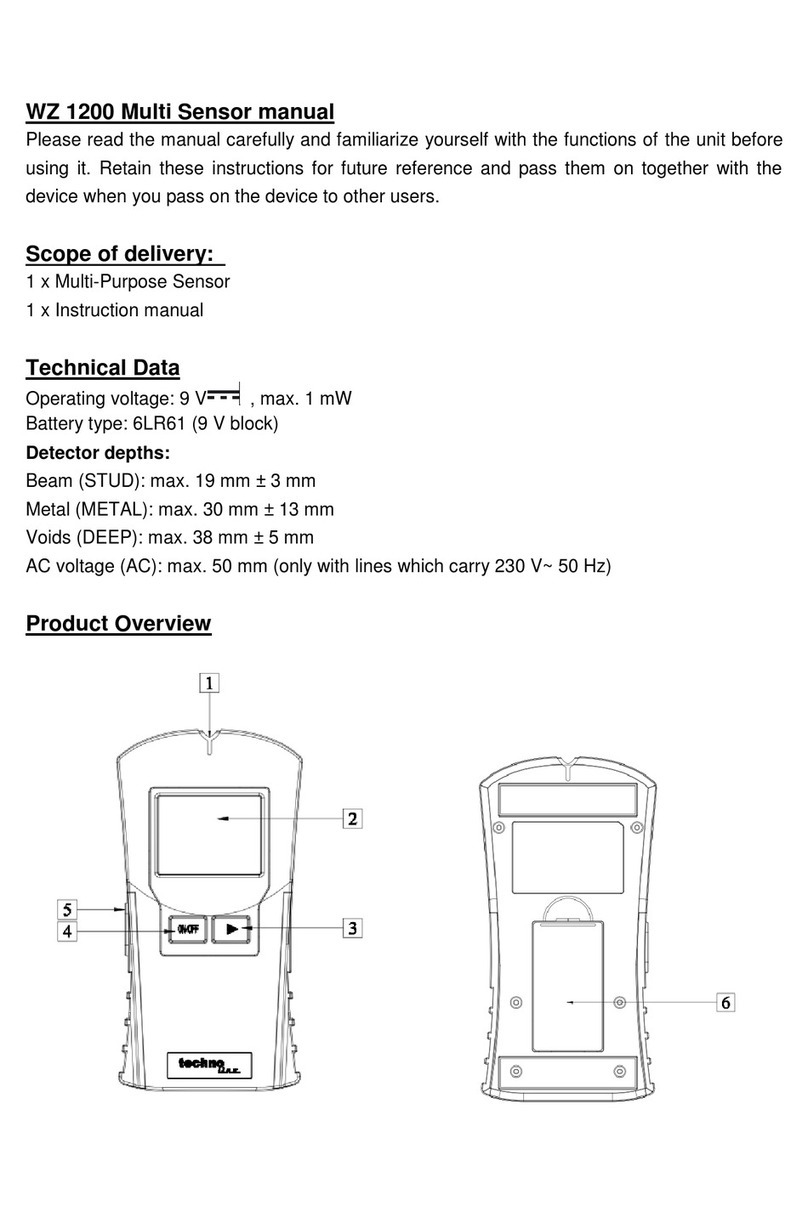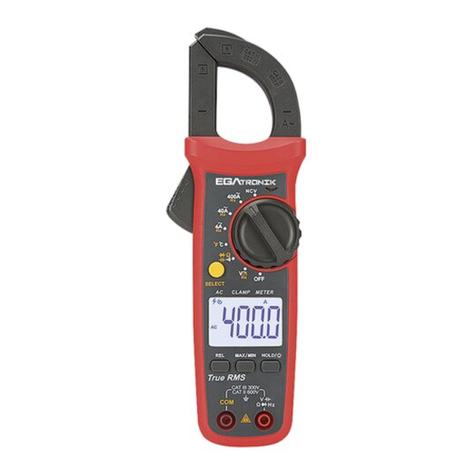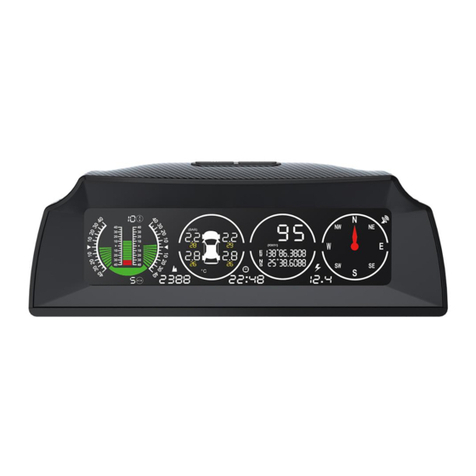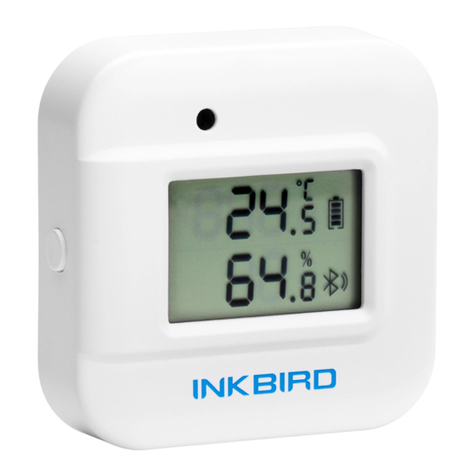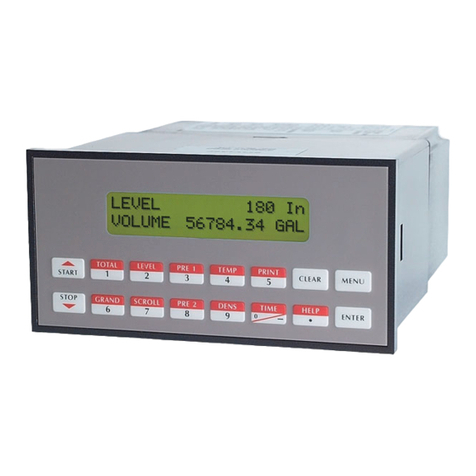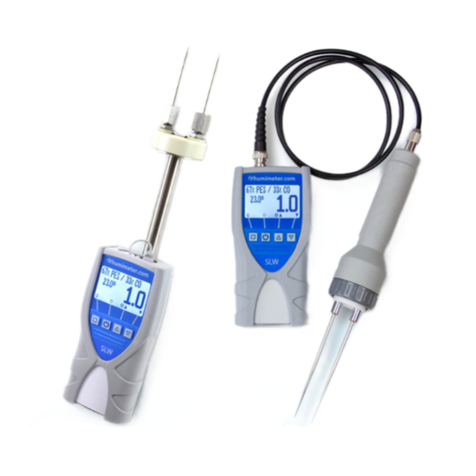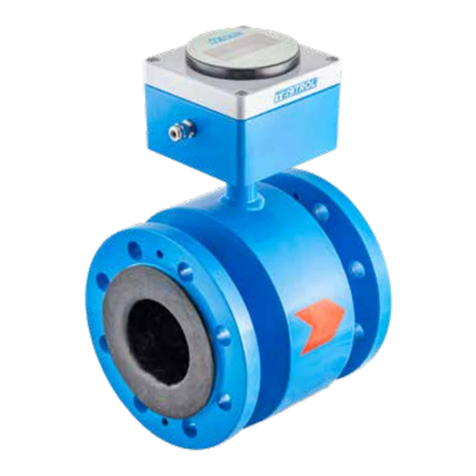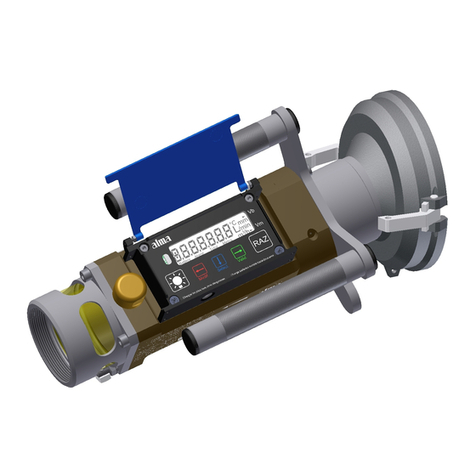Goldak 902 User manual


CONTENTS PAGE NO.
A. General Description . . . . . . . . . . . . . . . . . . . . . . . .1
B. Major Components And Accessories . . . . . . . . . .1
1. Transmitter . . . . . . . . . . . . . . . . . . . . . . . . . . . . . .1
2. Receiver . . . . . . . . . . . . . . . . . . . . . . . . . . . . . . . .4
3. Direct-Connection Cable (DCC) . . . . . . . . . . . . . .5
4. Ground Rod . . . . . . . . . . . . . . . . . . . . . . . . . . . . .5
5. GC-2 Cable Clamp . . . . . . . . . . . . . . . . . . . . . . .5
6. Headphones . . . . . . . . . . . . . . . . . . . . . . . . . . . . .6
7. Carrying Bag . . . . . . . . . . . . . . . . . . . . . . . . . . . .6
C. Modes Of Operation . . . . . . . . . . . . . . . . . . . . . . . .6
D. Operating Procedures . . . . . . . . . . . . . . . . . . . . . . .7
1. Energizing a Line to be Traced . . . . . . . . . . . . . .7
a) Inductive Energizing . . . . . . . . . . . . . . . . . . . .7
b) Conductive Energizing . . . . . . . . . . . . . . . . . . .9
2. Tracing an Energized Line . . . . . . . . . . . . . . . . .11
a) Peak Detection Method . . . . . . . . . . . . . . . . .11
b) Null Detection Method . . . . . . . . . . . . . . . . . .14
c) Determining Depth of a Line . . . . . . . . . . . . . .15
3. Finding Lines of Completely
Unknown Location . . . . . . . . . . . . . . . . . . . . . . .17
4. Locating Hidden Valve Caps
and Manholes . . . . . . . . . . . . . . . . . . . . . . . . . . .18
E. Miscellaneous Notes and Suggestions . . . . . . . .20
F. Instrument Maintenance . . . . . . . . . . . . . . . . . . . .20
1. Battery Replacement . . . . . . . . . . . . . . . . . . . . .20
2. Mechanical Care . . . . . . . . . . . . . . . . . . . . . . . . .21
3. Troubleshooting . . . . . . . . . . . . . . . . . . . . . . . . .22
G. Servicing . . . . . . . . . . . . . . . . . . . . . . . . . . . . . . . . .23

A. General Description:
The Goldak Model 902 is a hand-held electronic pipe and cable
locator, designed according to the classic “split-box” concept. Like
its predecessors in the Model TR series, the Model 902 is used to
trace underground conductive networks such as water and gas
mains, telephone, cable TV and electric power cables, and any con-
tinuously conductive pipe or cable. Also, as with traditional “split-
box” locators, the Model 902 may be used to electronically deter-
mine the depth of buried lines, by employing simple operating tech-
niques.
However, the Model 902 also incorporates features that are not
found in traditional locators. Designed with patented SI (super-induc-
tive) technology, the Model 902 packs superior performance into a
convenient, hand-held package that is significantly smaller than
other two-box locators. Durability of the Model 902 is insured by
solid construction in a tough, Xenoy housing. Also, to enhance locat-
ing convenience, sub-surface metallic structures, including valve
caps, risers and manhole covers, can be found easily during tracing
by pressing a single push-button switch.
B. Major Components and Accessories:
1. Transmitter.
The transmitter generates a signal which is to be used to
“energize” the conductive line to be located. When a line is
energized, it radiates the generated signal in a pattern which
corresponds to the direction of the line, and which may be used
not only to trace the line but also to determine its depth. The
signal may be transferred to the line by one of two methods:
inductively or conductively. Inductive transferrance does not
require the line to be electrically exposed. Conductive transfer-
rance requires that the transmitter be connected physically via
Model 902 Pipe & Cable Locator
1

cable to the line to be traced. Section D of this manual,
“Operating Procedures,” explains these transmission meth-
ods in greater detail. A detailed explanation of the transmitter
features and controls follows here (refer to Fig. 1):
a) The POWER Switch. This booted push-button switch
controls the power state of the transmitter. Depressing
this switch so that the adjacent “BATT” light illuminates
“turns on” the transmitter, causing it to generate a signal.
Depressing the switch again will deactivate the transmit-
ter.
b) The BATT Indicator. This LED is lit when the transmitter is
activated and the condition of the battery source is good.
If this LED does not illuminate when the POWER switch is
pressed, or it becomes unlit during operation, the batter-
ies need to be replaced.
2

c) The PULSE Switch. This switch controls whether the
signal generated by the transmitter is continuous or
pulsed at a frequency of 5 to 10 times per second.
Pulsing the signal allows it to be easily identified and also
conserves the transmitter's batteries. The transmitter is in
“pulse mode” when the BATT indicator is flashing.
d) The OUTPUT LEVEL Switch. This push-button controls
the intensity of the signal that is generated by the trans-
mitter. Depressing this button so that the “HI” indicator is
lit transmits the maximum amount of signal for any given
signal transfer method. When the “HI” indicator is unlit,
the signal output is reduced.
e) The HI Indicator. As explained above, this LED indicates
the level of signal that is presently being transmitted.
f) The DIRECT OUTPUT Jack. Inserting the plug of the
directconnection cable (hereafter referred to as the
“DCC”) into this jack switches the transmitter into “con-
ductive” mode. In this mode, a line may be energized
directly by physically connecting the red clip of the DCC
to an exposed part of the line.
2. Receiver.
The receiver is used to detect the signal generated by the
transmitter, and therefore to trace the conductive line that the
transmitter is energizing. While locating a line, the operator
may use the receiver in either of two tracing modes: peak
and null. When using peak mode, the operator searches for
a maximum signal; this is the most sensitive mode. In null
mode, the operator looks for places where the signal vanish-
es. A single pushbutton sets the receiver in an auxiliary
detection mode (locate mass) which allows the operator to
Model 902 Pipe & Cable Locator
3

conveniently find buried metallic masses, such as valve caps
or manhole covers. Section D of this manual, “Operating
Procedures,” contains more details about these locating
methods and others. Specific features and controls found on
the 902 receiver panel are described here (refer to Fig. 2):
a) The POWER Switch. This push-button switch activates
and deactivates the receiver. The receiver is activated
(“on”) when the POWER switch is depressed so that the
“BATT” light above this switch illuminates. Depressing the
switch again will turn the receiver “off”.
b) The BATT Indicator. When the condition of the batteries in
the receiver is good, this LED shines when the receiver is
activated. If this indicator does not shine when the
POWER switch is pressed, or it stops shining during
operation, then the batteries need to be replaced.
4

c) The SENSITIVITY Switch. Using this button will toggle the
sensitivity of the receiver between a low and a high state.
That is, this switch controls the receiver’s overall sensitivi-
ty to the signal produced by the 902 transmitter. The LED
indicator above this switch monitors what the present
sensitivity mode of the receiver is. (NOTE: This switch
does NOT control the sensitivity of the receiver while in
“locate mass” mode.)
d) The HI Indicator. This LED indicates the present sensitivity
of the 902 receiver when in normal tracing mode. The
indicator will be lit to correspond to a state of high sensi-
tivity. Likewise, the LED will be darkened in the low
sensitivity mode.
e) The LOCATE MASS Switch and Indicator. Pressing this
switch so that the LED indicator directly above it illumi-
nates changes the 902 receiver from a line tracer to a
metallic mass locator. Examples of buried masses that the
receiver is able to find in this mode are valve caps and
manhole covers. Using the instrument in this mode
disables normal receiving functions.
f) The SIGNAL LEVEL Control. This knob is the most impor-
tant control on the 902 receiver from an operating stand-
point. While in tracing mode, use this knob to gradually
adjust the sensitivity of the receiver to the transmitted
signal. When tracing in “peak” mode, use this control to
set the point of maximum signal on the response meter;
in “null” mode, use it to adjust the width of the signal null.
Model 902 Pipe & Cable Locator
5

g) The Light Bar Meter. This solid-state LED bar meter pro-
vides a visual indication of the level of signal presently
being received. As described above, the response meter
will indicate both peaks and vanishing points in the signal
surrounding the line being traced.
h) Speaker. A water-resistant, small but powerful mylar
speaker delivers a strong audio output corresponding to
the signal received by the 902. In tracing mode, the sound
will track the LED meter response; however, in mass-
locating mode, the speaker delivers a continuous tone,
the frequency of which will rise when the receiver is
brought near to a metallic mass.
i) Headphones Jack. All sound normally supplied by the
speaker will be channelled to headphones when the
headphone plug is inserted here.
j) 45° Level Guage. When making a determination of line
depth, the operator will often find this small level helpful.
Oriented at a 45° angle with respect to the antenna, the
bubble in the level will center itself when the antenna is
positioned at 45° compared to level ground. See section
Dof this manual for more information on determining line
depth.
3. Direct-Connection Cable (DCC).
Included with every Model 902 instrument, this accessory
consists of a phone jack wired to two separate copper
clamps. Use this cable to inject the transmitter signal directly
into a specific line, thus conductively energizing it. To
accomplish this, connect the red clamp to the exposed line,
and optionally attach the black lead to some ground if
increased tracing distance is desired.
6

4. Ground Rod.
This U-shaped rod, also included with every 902, simply
gives the operator a means of establishing a solid ground for
conductive tracing. To use the ground rod, push it into some
soil, and clip the black lead of the DCC to it.
5. GC-2 Cable Clamp.
This accessory is useful when the operator wishes to ener-
gize a specific line, but there is no electrically exposed area
to make a conductive hook up. If the GC-2 is clamped
around a specific line, it will inductively energize the line with
a focused signal. The line will become considerably more
energized than surrounding lines, and therefore easily trace-
able. The Model GC-2 clamp is sold separately.
6. Headphones are also sold separately from the Model 902.
Any set of headphones may be used with the Model 902
Locator, provided it has a standard quarter-inch plug. We
recommend a comfortable “walkman” style of headphones,
which comes with a quarter-inch plug adapter.
Model 902 Pipe & Cable Locator
7

7. Carrying Bag.
There are two kinds of carrying bag available for the 902
locator, both constructed from rugged nylon canvas. The
smaller bag comes with the instrument originally and con-
tains only enough room to carry the instrument and its basic
set of accessories. The larger bag has additional pouches
specifically tailored to house the GC-2 cable clamp, a set of
headphones, and other miscellaneous items. The larger bag
is sold separately.
C. Modes of Operation:
1. Transmission Modes.
There are two modes of signal transmission for the Model
902 Pipe and Cable Locator: inductive and conductive. Two
discrete output levels may be selected for either mode, and
the operator may choose to pulse the signal in either mode
of transmission for easier identification.
a) Inductive Transmission. In inductive mode, the 902 trans-
mitter produces a radio signal capable of penetrating air,
ground, and other media in order to energize a nearby
conductive line. Having been effected by the transmitted
signal, the line then conducts the signal along its path.
The signal pattern surrounding the line corresponds to the
path of the line itself. Therefore, the operator may use the
902 receiver to trace the direction of the line and to
determine its depth from the signal pattern surrounding it.
Although energizing a line inductively can be convenient
and sometimes necessary, this method typically is less
precise than conductive transmission in its ability to
isolate a desired line.
8

b) Conductive Transmission. To activate this mode of trans-
mission, the operator inserts the plug of the direct-con-
nection cable into the DIRECT OUTPUT jack on the trans-
mitter control panel. Connecting the clip of the DCC
directly to some exposed part of the line will channel the
radio signal into the line through the cable. The line then
conducts the signal exactly as it does if it is inductively
energized, and the receiver can trace the line the same
as well. However, in this mode, energizing is much more
precise as well as more efficient. Therefore, one can gen-
erally expect longer and more reliable traces when using
conductive transmission. This is the preferred method of
transmission, and should be used in most cases when a
portion of the line to be traced is exposed.
2. Receiving Modes.
As for the transmitter, there are two general modes of loca-
tion for the 902 receiver: line tracing and mass locating.
For line tracing, the operator may choose between two
discrete levels of receiver sensitivity.
a) Line Tracing. This mode is used exclusively to detect the
signal generated by the 902 transmitter, and therefore to
locate lines which the transmitter is energizing. When
tracing, one may choose to use either of two methods:
peak or null. The operator selects the method solely by
how he positions the receiver with respect to the line
being traced. Peak method is selected by holding the
receiver so that the plane of the face of the receiver is
perpendicular to the surface above the line being traced.
Holding the receiver so that the face lies parallel to this
surface causes the signal to vanish when the energized
line is located; this is null method. In line tracing mode,
the operator may ascertain line depth by using simple
techniques.
Model 902 Pipe & Cable Locator
9

b) Mass Locating. At any time when the operator is using the
902 receiver for line tracing, he may choose to activate
mass locating mode. In this mode, the receiver sounds a
continuous tone and indicates detection of a metallic
mass with a notable shift in the frequency of the audio
tone. The frequency heard will rise when a conductive
mass is detected, and lower when a strictly ferrous mass
is detected.
3. Two-Box Modes.
The transmitter and receiver may be configured together to
enable location of "unknown" lines, lines which have no
known point at which to energize them. One method of find-
ing unknown lines involves having two operators, each hold-
ing one of the locator boxes and moving together in the area
that a line is suspected to be found.
D. Operating Procedures:
1. Energizing a Line to be Traced.
The Model 902 is an "active" locator. This means that the
902 receiver is designed to detect lines that have been ener-
gized by the signal generated from the 902 transmitter.
Therefore, the operator must prepare to trace a specific line
by first energizing it. Following are the methods for energiz-
ing lines.
a) Inductive Energizing
Using this method, the operator can energize the desired
line without having to make any physical contact with it.
Placed correctly upon the ground or pavement below
which the line to be traced lies, the transmitter radiates its
radio-frequency signal to the line (Fig. 4). Once effected
10

by the radiated signal, the metallic line behaves like a
large antenna, retransmitting the signal through the
ground and air in a pattern that corresponds to its path.
The line carries the signal on its path for several hundred
yards, depending on its depth, the mineralization and
conductivity of the ground, and the transmitter power set-
ting. To use inductive energizing, follow these steps:
i) Make sure that
the DCC is
removed from the
direct-output jack
on the transmitter.
If it is not, the
transmitter is in
conductive mode
and will not radiate
a signal through
the air.
ii) Turn on the transmitter. You have activated the transmit-
ter if the green BATT light is glowing. If you have
depressed the POWER button and the light does not
glow, you probably need to change the batteries.
iii) Select a power setting on the control panel of the
transmitter. Using the OUTPUT LEVEL switch, select
either low or high output power. High output is indicat-
ed when the HI light is glowing. At this time, you may
also want to set the PULSE switch. If the BATT light
blinks, the energizing signal will pulse as well. Such a
signal is often easier to identify while tracing.
Model 902 Pipe & Cable Locator
11

iv) Place the transmitter on the ground at a known location
directly above the line that you want to energize. As
depicted in Figure 5, it is important to place the transmit-
ter vertically and in the direction of the underground line.
Since the transmitter radiates a signal directionally, this
orientation over the line will optimize the signal transfer
into the line. With improper placement or orientation, it is
possible to cause little or none of the signal from the
transmitter to actually energize the line.
NOTE: It should be known that when placed over a line to ener-
gize it, the transmitter radiates signals from the sides and
top as well as from the bottom. Signals radiated through
the bottom are used to energize the line. Those coming
from the sides and top travel a short distance through the
air and are attenuated.
If the transmitter is aligned perfectly with the underground
line, the signals emerging from the sides will travel along
the path of the line. This can cause some confusion when
working close to the transmitter. To avoid such confusion,
offset the transmitter 10° or 15° from the general direction
12

of the line (Figure 6). The signal entering the line will
still be nearly optimized, and line tracing near the trans-
mitter box will be much truer.
b) Conductive Energizing
Unlike the inductive method, this energizing method
requires the line to be exposed so that a direct connection
can be made to it. However, conductive energizing pres-
ents significant advantages over inductive energizing, and
is therefore the preferred method. Since the signal enters
the line directly through the DCC, unwanted air signals are
minimized. Using a ground with the DCC will maximize
the energizing efficiency, so that tracing distance can
increase dramatically. More details concerning the appli-
cation of the DCC for direct hookup follow here and are
depicted in Figure 7:
i) Insert the plug of the DCC into the DIRECT OUTPUT
jack on the control panel of the transmitter. This will
automatically deactivate the inductive antenna.
Model 902 Pipe & Cable Locator
13

ii) Clip the red clamp on the DCC to an exposed portion
of the line that you wish to trace. Make sure that you
make good electrical contact with the line.
iii) If you choose to use the ground rod, insert it into the
ground several feet away from the line. Clip the black
clamp of the DCC to the ground rod, again insuring
sound electrical contact. NOTE: Grounding the DCC
while using the transmitter conductively is recommend-
ed, since this will dramatically increase the strength of
the signal on the line.
iv) If you choose not to use a ground, stretch out the
black cable and let it lay freely on the ground. Although
the magnitude of the signal carried on the line will be
small, it usually will be strong enough for short traces
very close to the transmitter. Working without a ground
is often helpful when tracing indoors or in other con-
fined areas.
CAUTION:
Do not connect the red and black clips together when
using the DCC. Although short-circuiting the output
leads will not result in immediate damage to the trans-
mitter, it will quickly drain your batteries and cause the
internal circuitry to heat up. If such internal heating is
allowed to occur for an extended period of time, even-
tual damage may occur.
2. Tracing an Energized Line.
As the energized line carries the signal from the transmitter, a
cylindrical pattern of energy forms around the line (Figure 8).
In general, the strength of the signal is strongest at the cen-
ter of this cylinder and gradually decreases away from the
center. The 902 receiver employs a directional antenna, so
14

that it can detect the signal in different response modes
depending on how it is positioned. By manipulating the
receiver over the line and properly interpreting the results,
an operator can perform several locating tasks with high
accuracy.
a) Peak Detection Method
Tracing a line by finding maximum points of signal, or
“peaks”, is the most intuitive method of tracing, although
not the most accurate. Both location and direction of a
line can be determined simply by positioning the 902
receiver so that it indicates a maximum relative response.
The following steps illustrate how this is accomplished.
i) After having energized a pipe or cable, turn on the
receiver. At first, set the sensitivity to low (HI light off);
also, make sure that the LOCATE MASS feature is
deactivated (LOCATE MASS light off).
ii) If you are using inductive energizing, walk down the
line 20 or 30 feet, moving further out of range of air
signals coming from the transmitter. If you are using
conductive energizing, you may begin tracing close to
the transmitter.
iii) Hold the receiver vertical and in the approximate direc-
tion of the line as shown in Figure 8. Adjust the
SIGNAL LEVEL control so that the receiver responds
to the signal from the line at around 3/4 scale.
Model 902 Pipe & Cable Locator
15

iv) Now move the receiver back and forth, causing the meter
and sound response to increase and decrease and "peak"
over the line. Continue peaking over the line as you walk
in the direction of the
line; the line will be
directly below where
the signal response is
maximum as you walk.
v) As you distance yourself
from the point at which
the transmitter is
energizing the line, the
signal intensity will
continue to diminish.
Thus, the receiver
response will decrease
as well. To gradually
increase the relative
16

sensitivity of the receiver, turn the SIGNAL LEVEL
control in the clockwise direction, keeping the
response between 1/4 to around 3/4 scale. When the
signal from the line has faded so that it is no longer
detectible, push the SENSITIVITY button so that the HI
light glows. You may then continue tracing as before.
vi) At any time while tracing, you may determine the direc-
tion and depth of the line. To determine the direction,
rotate the receiver left and right as shown in Figure 9.
Notice that rotating the receiver will cause a peak
response as well. When the response is maximum, the
receiver box is parallel to the direction of the line. For
information on determining line depth, see part (c) of
this section.
vii) If, while tracing, the signal suddenly vanishes along the
direction you are moving, then the line either ends at
that point or it has turned to the right or the left. Figure
10 depicts a simple way to determine if the line has
turned. Walk back up the line about four feet and then
walk in a circle either right or left. Keep the side of the
receiver box pointed toward the center of the circle. If
a lateral turn exists, the receiver will peak over the line,
giving the direction of the turn. If the line simply ends,
then no other strong peaks will be detected.
viii) If, during tracing, the signal gradually fades and the
receiver is set to its highest sensitivity, then you may
continue tracing by bringing the transmitter closer and
reenergizing the line at a point you have already
located. Usually, you would use inductive energizing
when moving the transmitter closer, but connecting to
a nearby part of the line that is exposed is preferred.
Model 902 Pipe & Cable Locator
17

b) Null Detection Method
Also called “centering,” tracing a line by finding points
where the signal vanishes (“nulls”) is an alternate method
to peaking. Because the receiver relies on a directional
antenna, positioning it so that the front panel perfectly
faces the line will cause it to detect no signal. Using nulls
over the line, the operator can ascertain the precise loca-
tion of a line below the surface, as well as determine its
depth.
18
Table of contents
Other Goldak Measuring Instrument manuals

